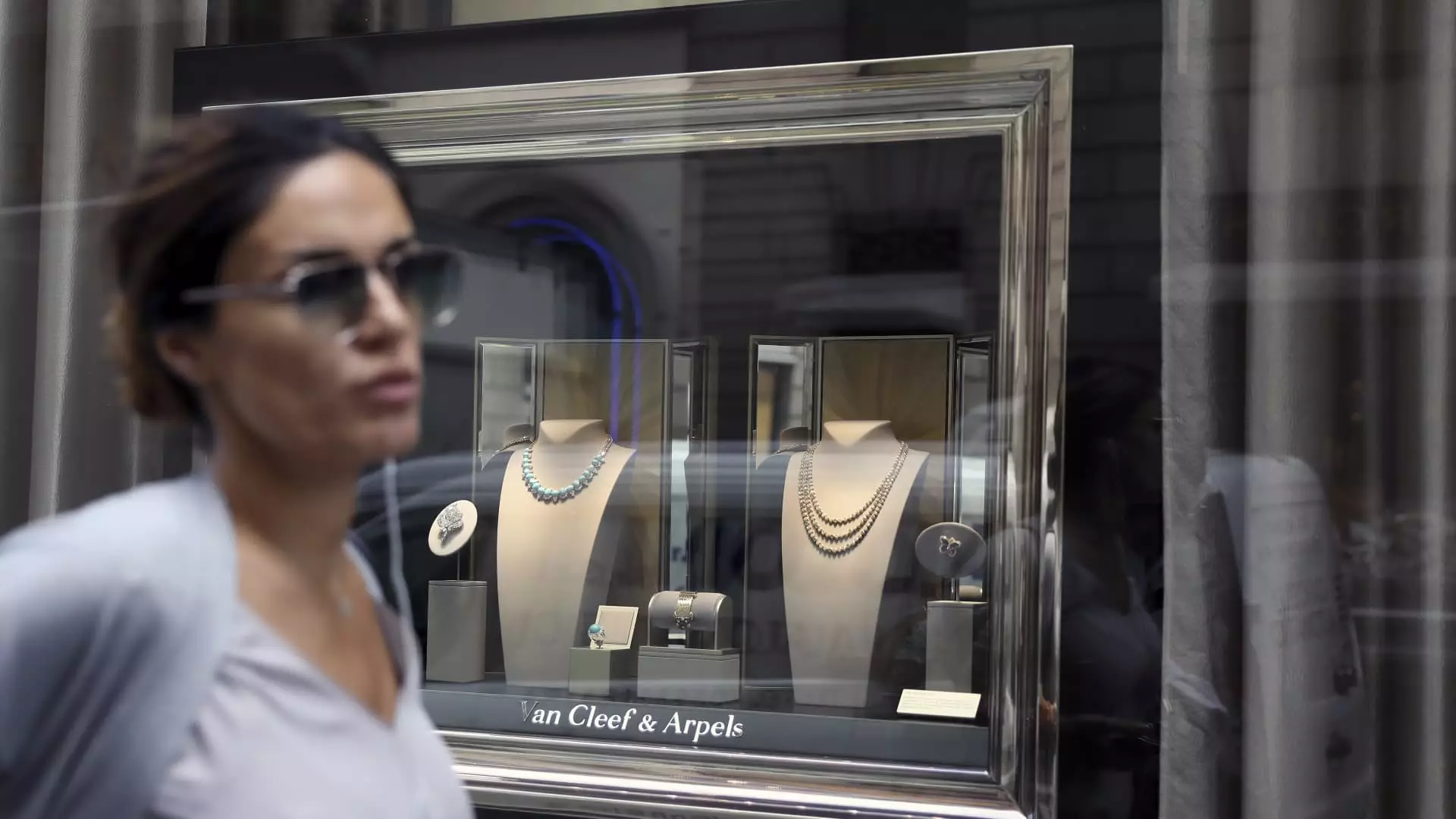In a world where luxury is often diluted by accessibility, the realm of high-end jewelry remains an oasis for the ultra-rich. It’s an undeniable fact: the wealthiest among us are still draping themselves in diamond-encrusted rings and rare gemstone necklaces, symbols of both opulence and exclusivity. While broader luxury markets may be contracting, the top echelon of this sector—like those under the watchful eye of Richemont boasting brands like Cartier and Van Cleef & Arpels—continues to thrive. Here lies the juxtaposition of affluent consumers who demand only the rarest and most exquisite pieces, while many ordinary shoppers are reconsidering their spending habits.
This stark dichotomy illustrates a critical concern: the spread of income inequality. As some indulge in gaudy displays of wealth, others tighten their belts in the face of economic uncertainty. The luxury jewelry market has therefore become not just a haven for the rich, but also a glaring testament to society’s escalating class divide. As Richemont’s jewelry brands ascend the desirability ladder, one must question whether this narrow focus on opulence could further alienate segments of the population who once aspired to partake in these gilded dreams.
Richemont’s Dominance: A Double-Edged Sword
Richemont’s ability to thrive amid a broader downturn speaks volumes about the selective nature of luxury consumption. The company reported an impressive 11% growth in its Jewelry Maisons division, a bright spot in an otherwise tepid luxury goods landscape. While giants like LVMH see a diminishing sheen on their luxury offerings, Richemont’s selective brilliance solidifies its position at the top.
However, the luxury sector’s relentless pursuit of exclusivity is a double-edged sword. Existing in a bubble of wealth, the pressure to maintain an elite status only intensifies. It is a fine line between fulfilling the insatiable appetite of the ultra-rich and being cast aside as a fleeting fad. When Richemont’s chairman, Johann Rupert, asserts that they are gaining market share, it raises critical questions about the sustainability of such growth. If fewer consumers in the middle class can afford even the most entry-level luxury items, how long can these brands continue to prosper?
Headwinds and Market Fluctuations: The Uneasy Road Ahead
Indeed, the luxury market does not exist in isolation. Richemont is not entirely shielded from the broader challenges facing the sector. The watch market, a crucial part of their portfolio, reports a heart-wrenching decline of 13% amid softer demand—especially from China, a once-thriving bastion for luxury consumption. While the allure of exclusive watches may still exist, the over-saturation fueled by pandemic buying is a looming threat that casts a shadow over recovery.
The intricate dance of economic forces—currency fluctuations, rising commodity prices, and geopolitics—complicates matters further for luxury brands. The Swiss franc’s strength against the dollar, alongside the rising costs of gold, weighs heavily on Rosmert’s luxury landscape, making it difficult to navigate. In this maelstrom of uncertainty, can brands that represent aspiration and status continue to do so without alienating their more financially beleaguered customer base?
Jewels Versus Watches: The Changing Dynamic of Consumer Behavior
Interestingly, jewelry is experiencing a unique renaissance compared to luxury goods like handbags and timepieces. The frequency of jewelry purchases is relatively higher, suggesting that consumers are more inclined to invest in these precious adornments than to save for extravagant bags that come with heavier price tags. Luca Solca’s observation about the shift from watches to jewelry speaks volumes; the latter has become comparatively more affordable without compromising its luxurious allure.
It underscores a broader phenomenon: our society’s changing relationship with luxury. No longer is it sufficient to merely own expensive items; consumers are searching for meaning, emotional connection, and accessibility within their luxury purchases. Brands must adapt accordingly—without losing their appeal to the ultra-rich who still wield the wallet and the power to dictate market trends.
The Fragility of Glamour: A Need for Reevaluation
In this context, the luxury industry’s dependence on traditional avenues—such as exclusive materials and ornate designs—is a ticking time bomb. To thrive, brands like Richemont must recognize that the air of exclusivity they have cultivated could just as easily become their downfall if they remain insular. The temptation to elevate their prices and continue scaling without monitoring market sentiments could lead to disastrous repercussions.
Luxury must evolve to be more inclusive and reflective of the ethical and social dimensions of today’s consumers. As they adapt to the changing tides, the challenge lies in balancing ambitions with accessibility—capturing not only the eyes of the wealthiest but also winning over aspirational buyers who seek their own place in the world of high-end luxury. In navigating this precarious terrain, luxury brands may find that true opulence lies not just in tangible assets, but in fostering a deeper, more meaningful relationship with their audience.

Leave a Reply